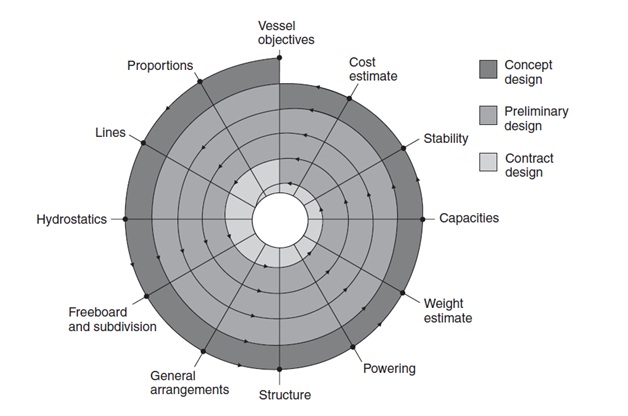When the preliminary design has been selected the following information is available:
- Principal structural details
- Preliminary general arrangement
- Propulsive characteristics and hull form
- Stability
- Displacement
- Dimensions
- The dimensions are primarily influenced by the cargo carrying capacity of the vessel. In the case of the passenger vessel, dimensions are influenced by the height and length of superstructure containing the accommodation.
Length where not specified as a maximum should be a minimum consistent with the required speed and hull form. Increase of length produces higher longitudinal bending stresses requiring additional strengthening and a greater displacement for the same cargo weight. Breadth may be such as to provide adequate transverse stability. A minimum depth is controlled by the draft plus a statutory freeboard; but an increase in depth will result in a reduction of the longitudinal bending stresses, providing an increase in strength, or allowing a reduction in scantlings.


Leave a Comment